
Whether you’re a seasoned pro or a DIY enthusiast, having the right tools at your disposal can make all the difference.
In this guide, we’ll delve into the world of landscape installation equipment, exploring the advantages of both hand tools and machinery.
While each has its unique strengths, understanding when to employ them can significantly impact the efficiency and quality of your landscaping endeavors.
So, let’s equip you with the knowledge you need to turn your outdoor visions into reality.
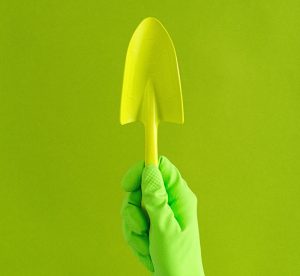
When it comes to landscaping, shovels, and spades are the unsung heroes of landscape installation equipment, each with its own set of specialized roles. When selecting the right tool for the job, consider the specific task at hand and the type of soil you’ll be working with. A well-chosen shovel or spade not only eases the workload but ensures that you’re equipped with the right tool for the job. So, whether you’re excavating or edging, having the right shovel or spade in your arsenal is key to a successful landscaping project.
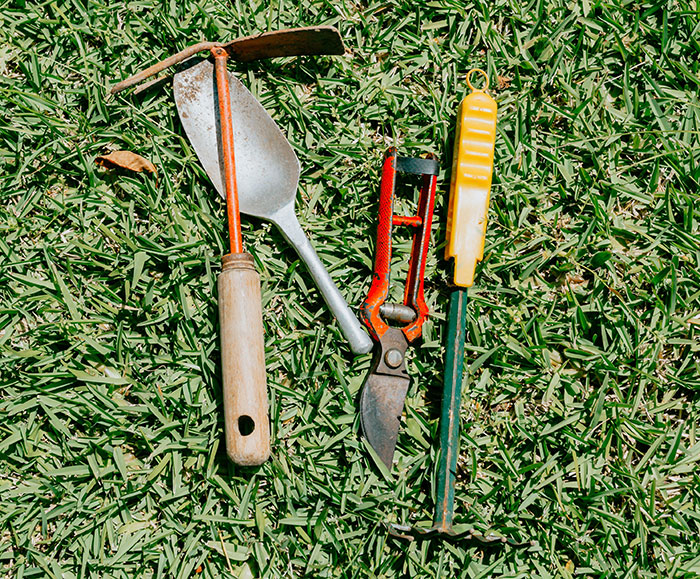
Ideal for digging and lifting heavy materials, such as soil, gravel, or mulch.
Versatile for general digging tasks, especially in softer soils.
Designed for edging, cutting trenches, and other precise digging work.
Characterized by a wide, flat blade, great for moving loose materials like mulch or snow.
Features a flat, squared-off blade, excellent for precise digging, edging, and planting.
Long, narrow blade designed for digging deep, narrow trenches, often used for irrigation or drainage systems.
Specialized for digging holes for fence posts or other vertical installations.
Combines features of a shovel and a fork, useful for moving mulch or compost.
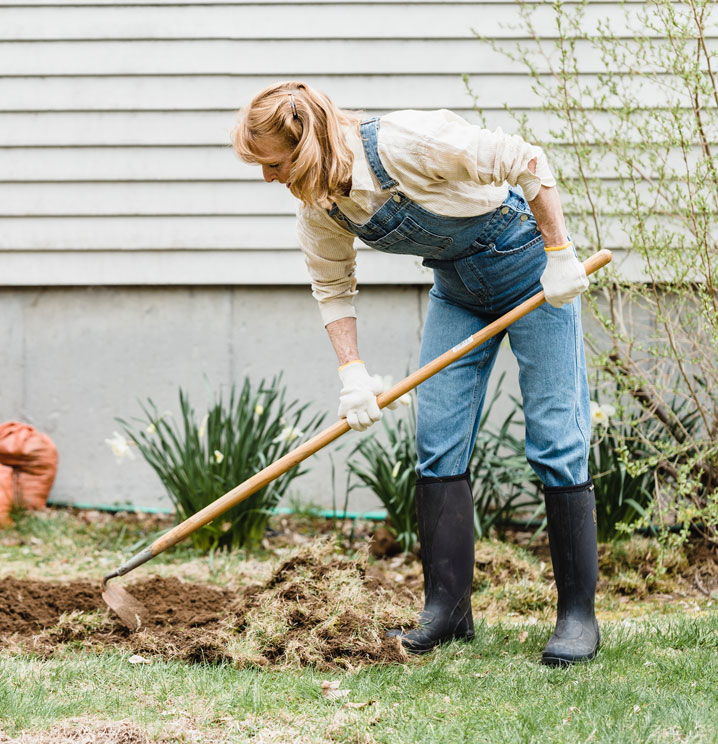
Rakes and hoes are indispensable tools in the world of landscaping, each bringing its own unique strengths to the table. Rakes, with their sturdy tines, excel at leveling surfaces and gathering debris like fallen leaves or grass clippings. They’re also invaluable for spreading mulch or smoothing out soil.
Hoes, on the other hand, are the go-to choice for cultivating soil, creating furrows for planting, and removing weeds. The sharp, angled blade allows for precise movements, making it a versatile tool for various landscaping tasks. When it comes to material considerations, durability is key.
Opting for rakes and hoes made from high-quality metals ensures longevity and reliable performance, even in demanding conditions. These essential hand tools, when chosen wisely, play pivotal roles in achieving a well-maintained and aesthetically pleasing outdoor space.
Pruners and shears are the precision instruments of landscaping, essential for maintaining the health and appearance of plants. Bypass pruners employ a scissor-like action, ideal for live stems and delicate growth. Anvil pruners, on the other hand, work by pressing a blade against a flat surface, making them better suited for dead or woody stems. Knowing when and how to employ each type ensures efficient and effective pruning.
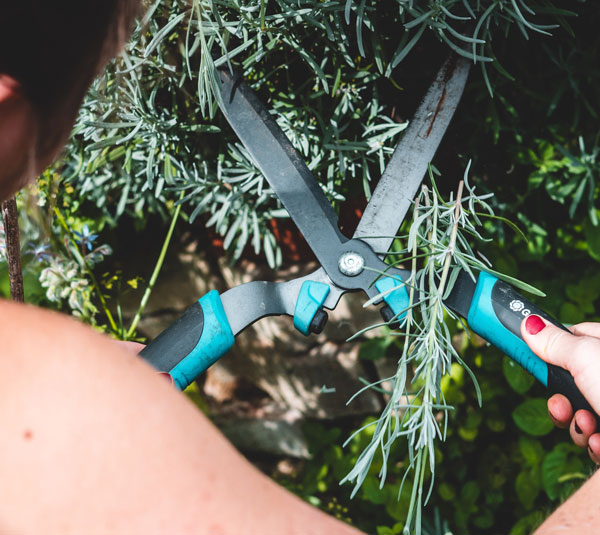
Trowels and Edgers excel in detail work. Trowels are perfect for tasks like transplanting and weeding, while edgers create clean and defined borders. Choosing the right pruners, shears, trowels, and edgers guarantees precision and finesse in your landscaping endeavors.
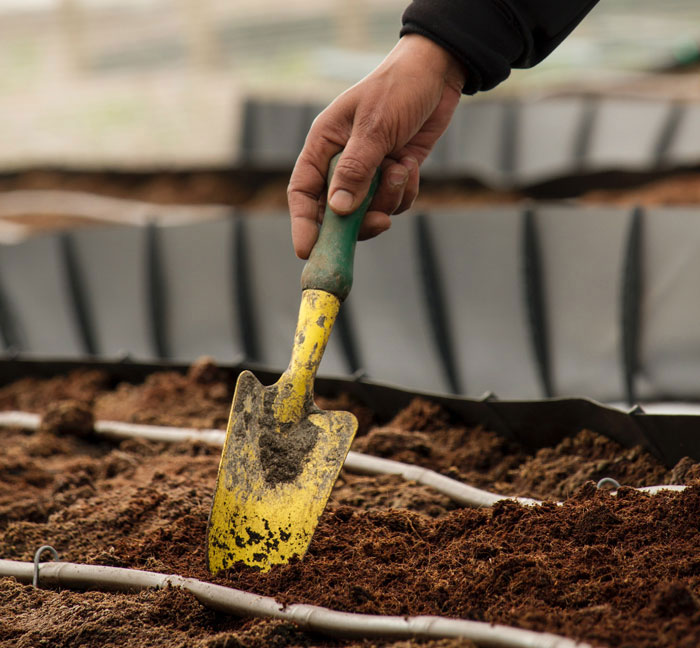
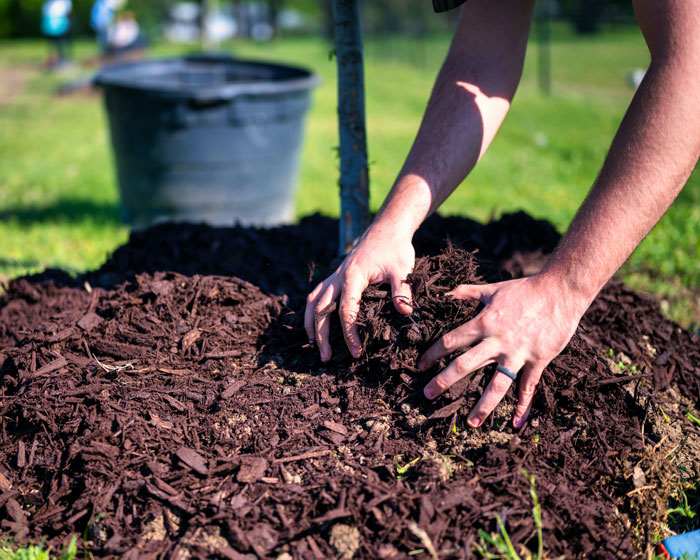
Mulch and ground cover play crucial roles in maintaining a healthy and vibrant landscape. The benefits of mulching are manifold; it helps retain soil moisture, suppresses weeds, regulates soil temperature, and adds a polished aesthetic to garden beds.
When it comes to selecting the right material, considerations like climate, plant types, and personal preferences come into play. Organic options like bark chips or straw offer natural decomposition and enrich the soil, while inorganic choices like stone or rubber provide long-lasting coverage.
Ground cover not only enhances visual appeal but also stabilizes soil, prevents erosion, and acts as a natural weed barrier. Fertilizers, compost, and pH balancers are vital for maintaining soil health and ensuring optimal plant growth. These elements replenish essential nutrients, improve soil structure, and balance pH levels, creating a fertile foundation for a thriving landscape.
Adding Lime (for Alkaline Soil): If the soil is too acidic, adding lime can help raise the pH level. Lime comes in different forms such as calcitic lime and dolomitic lime. It gradually increases the soil’s pH over time. It’s important to follow recommended application rates, as adding too much lime can lead to excessively alkaline conditions.
Adding Sulfur (for Acidic Soil): To lower pH in alkaline soil, sulfur can be added. Elemental sulfur reacts with soil bacteria to produce sulfuric acid, which in turn lowers the pH. This process can take several months, so it’s important to monitor the pH regularly.
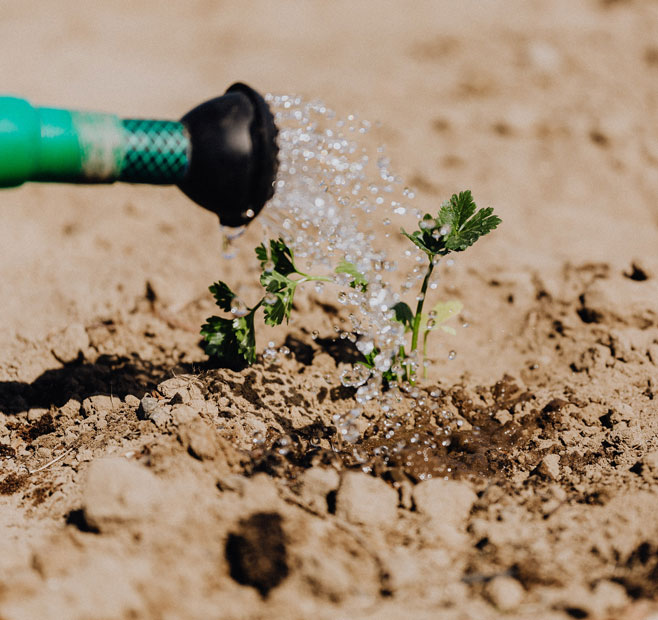
Efficient irrigation systems are the lifeblood of a thriving landscape, ensuring plants receive the right amount of water at the right time. Listed below are some common choices for irrigation systems.
Delivers water directly to the base of plants through a network of tubing and emitters, minimizing water wastage and promoting deep root growth.
Distributes water through a network of pipes and sprinkler heads, providing even coverage across larger areas like lawns and flower beds.
Porous hoses that allow water to seep out along their length, providing slow, consistent watering to plants in garden beds.
These systems use timers to automate watering schedules, ensuring plants receive consistent and timely hydration.
Features rotating arms that distribute water in a circular pattern, suitable for larger areas like lawns.
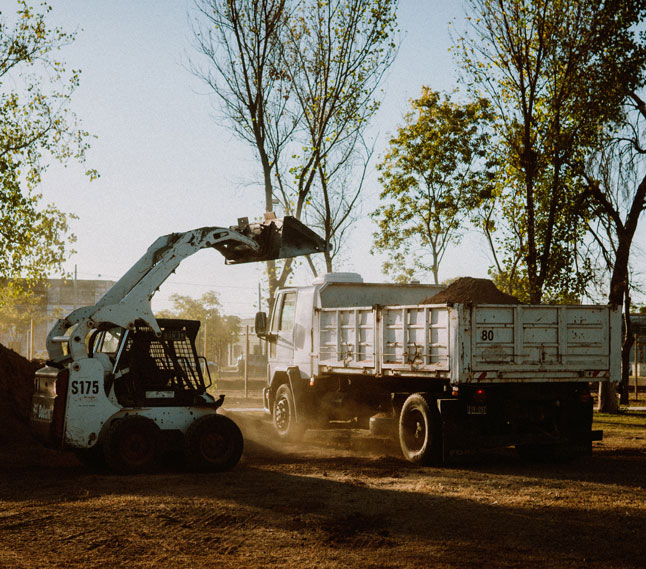
When it comes to larger-scale landscape projects, having the right machinery can make all the difference. These powerful tools are designed to tackle big tasks efficiently and effectively.
Bobcats and excavators are workhorses in the landscaping industry, particularly in hardscaping projects.
They excel at tasks like digging foundations, moving heavy materials, and shaping terrain.
Trenchers and augers, on the other hand, are indispensable for tasks like digging trenches for irrigation systems and drainage. Proper maintenance is essential to keep these machines in top working condition, ensuring they’re always ready for the demands of the job. With the right machinery at your disposal, you’re equipped to take on even the most ambitious landscape projects with confidence and precision.
To see all of the services we provide, check out our landscaping page.
In the grand scheme of successful landscaping, having the right equipment is paramount. As we wrap up, let’s revisit the key takeaways.
We’ve explored the significance of hand tools and machinery, each with its unique strengths. We’ve delved into the vital role of soil types and amendments, emphasizing their crucial role in nurturing healthy plants.
Proper irrigation systems, from drip to sprinklers, were highlighted for their role in ensuring optimal hydration. And of course, mulch and ground cover emerged as unsung heroes in maintaining both aesthetics and plant health.
Whether you’re a seasoned pro or just starting out, choosing the right tools can make all the difference. Keep exploring, keep experimenting, and most importantly, keep nurturing the green spaces around you. Happy landscaping!